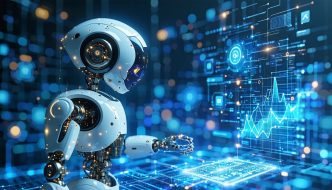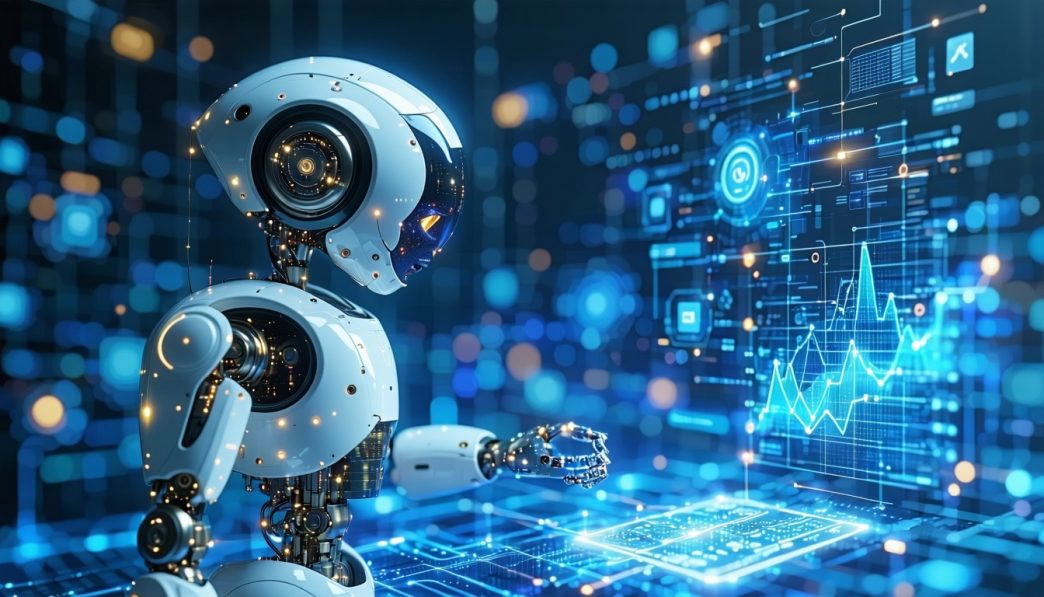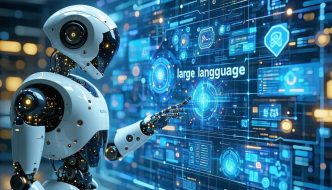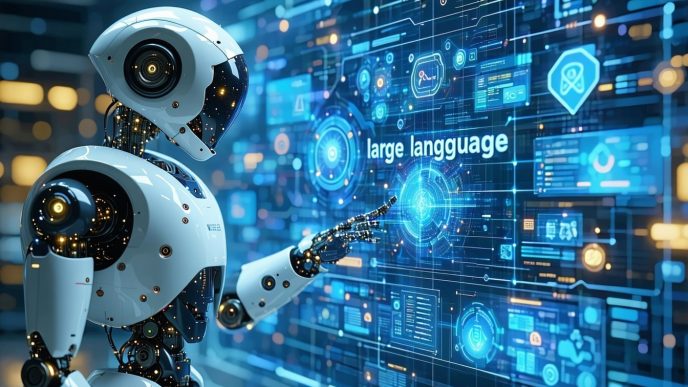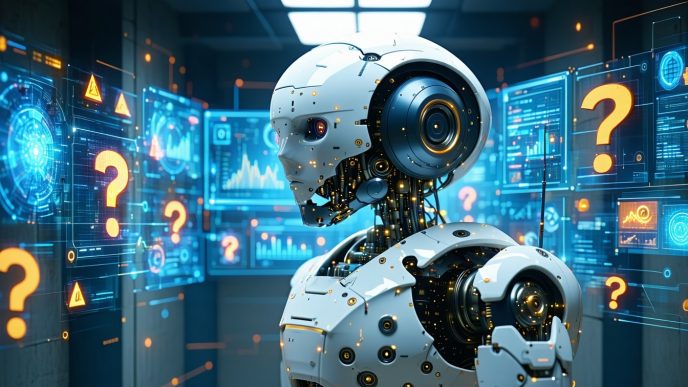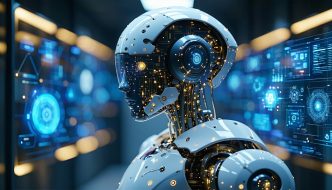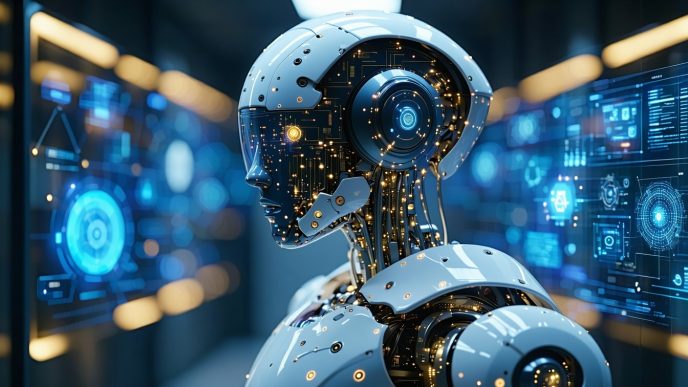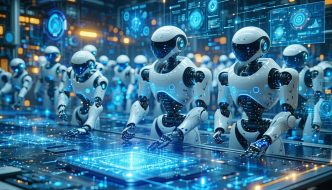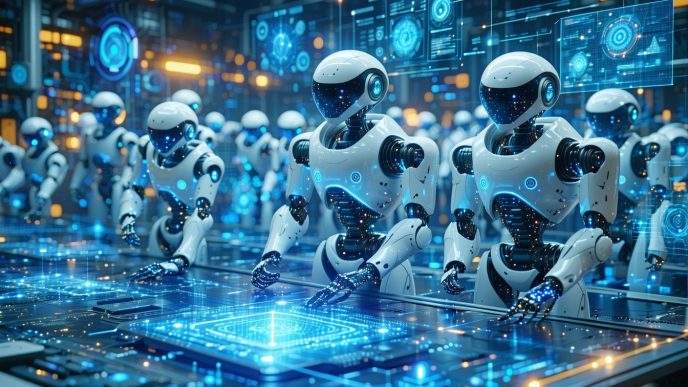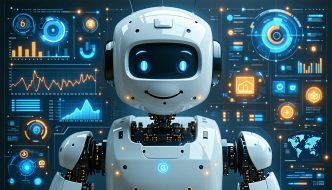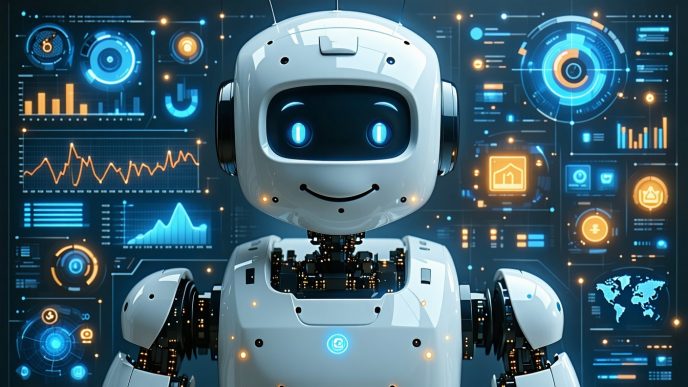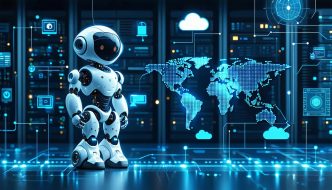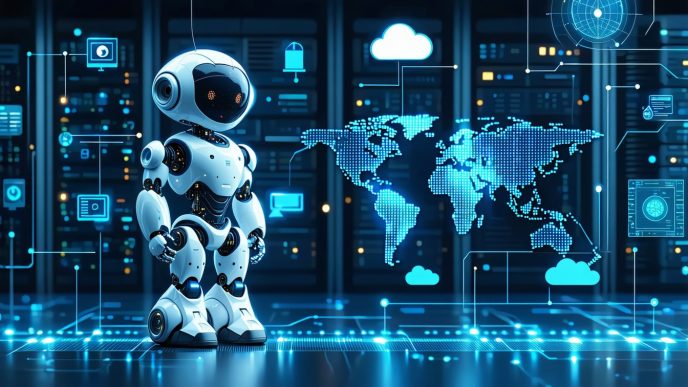Understanding AI in Robotics
Overview of Artificial Intelligence in Robots
Artificial intelligence (AI) plays a transformative role in the functionality and capabilities of robots. It allows machines to perceive, interpret, and respond to their environment in a way that mimics human cognitive functions. AI in robotics encompasses various technologies and methodologies that enable robots to perform tasks autonomously and efficiently.
AI systems used in robots include machine learning algorithms, computer vision, and natural language processing. These systems help robots recognize objects, navigate spaces, and engage with humans. The integration of AI allows robots to process vast amounts of data and learn from experience, ultimately improving their performance over time. For an in-depth look at this aspect, check out our article on ai and decision making in robots.
Importance of Real-time Decision Making
Real-time decision making is critical for robotic operations, especially in dynamic environments. Robots must analyze their surroundings and respond promptly to changes, whether avoiding obstacles, adjusting to new tasks, or interacting with people. This requirement for speed makes AI an essential component for achieving efficient performance.
The ability to make instantaneous decisions directly impacts various applications, from autonomous vehicles navigating traffic to industrial robots performing assembly line tasks. Several factors enhance real-time decision making in robots, including:
| Factor | Description |
|---|---|
| Data Processing Speed | The faster a robot can analyze input data, the quicker it can react. |
| Algorithms Used | Advanced algorithms enable smoother and more accurate decision-making processes. |
| Sensor Technology | High-quality sensors provide accurate real-time data necessary for swift responses. |
By prioritizing real-time decision making, robots can achieve better adaptability in unpredictable situations. For a closer examination of how rapid decision making and AI come together in robotics, explore our article on real time ai processing in robots and robot pathfinding and decision making.
This ability to learn and adapt remains at the forefront of transforming the capabilities of robots, paving the way for more advanced applications in numerous fields.
On Device AI vs. Cloud AI
Understanding the differences between on-device AI and cloud AI is crucial for grasping how robots process information and make decisions. Each approach has distinct characteristics that affect their performance in robotics.
Difference Between On Device AI and Cloud AI
On-device AI refers to the computation and analysis that takes place directly on the robot or device itself. This enables immediate data processing and decision-making without the need for internet connectivity. In contrast, cloud AI relies on data sent to and from remote servers for processing. The robot must communicate with the cloud, which can introduce latency.
| Feature | On Device AI | Cloud AI |
|---|---|---|
| Processing Location | Local to the device | Remote servers |
| Latency | Low (real-time processing) | High (depends on connectivity) |
| Internet Requirement | None | Required |
| Data Privacy | Enhanced (local processing) | Vulnerable (data transmitted) |
| Scalability | Limited by hardware | High (server capacity) |
Advantages of On Device AI for Robots
For robots, on-device AI presents several significant advantages that enhance their functionality and performance:
-
Real-Time Processing: Immediate data interpretation allows for quick actions, critical in dynamic environments. This is particularly beneficial in applications such as robotics navigation and robot pathfinding and decision making.
-
Reduced Latency: Because there is no reliance on cloud processing, robots can react faster to stimuli, improving overall responsiveness. This feature is essential for tasks requiring swift adjustments in real-time scenarios, as seen in real-time AI processing in robots.
-
Increased Privacy and Security: Keeping sensitive data on the device minimizes the risk of breaches associated with cloud storage. This aspect is especially important in various applications where data protection is paramount, like in ai decision transparency in robots.
-
Autonomy: Robots can operate independently without a continuous internet connection, allowing them to function in remote areas or during network outages. This autonomy is critical for many autonomous systems and their operational integrity.
The incorporation of on-device AI is a transformative step in the realm of robotics, allowing for enhanced capabilities and performance. For a deeper understanding of how AI influences robotic functions, refer to our discussion on ai and decision making in robots.
Edge AI in Robotics
What is Edge AI?
Edge AI refers to the deployment of artificial intelligence algorithms and models directly on devices, such as robots, rather than relying on cloud-based systems. This approach enables faster data processing, reducing latency and increasing the robot’s ability to make immediate decisions. By processing information locally, robots equipped with edge AI can react more swiftly to their surroundings and execute tasks with greater efficiency.
Edge AI is essentially about bringing computational power closer to where it’s needed. It allows robots to analyze data from sensors in real-time, without having to send that data to a remote server. This capability is essential in environments where quick reactions are critical, such as in autonomous vehicles or robotic assistants.
Application of Edge AI in Robotics
The applications of edge AI in robotics are vast and varied, enhancing both functionality and performance. Below are some key areas where edge AI plays a crucial role:
| Application | Description |
|---|---|
| Real-time Navigation | Robots can process sensor data immediately to navigate complex environments, ensuring safety and efficiency. |
| Object Recognition | Edge AI enables robots to identify and classify objects quickly through on-device processing, which is especially important in manufacturing and logistics. |
| Voice and Gesture Recognition | Robots can understand commands or gestures in real-time, improving interaction with users. This is essential in smart home applications. |
| Predictive Maintenance | By analyzing data from various components, robots can predict potential failures before they occur, thus minimizing downtime. |
| Emergency Response | In critical situations, such as search and rescue, robots can make instant decisions that significantly impact outcomes. |
Edge AI significantly enhances the capabilities of robots, allowing them to operate independently without constant internet connectivity. It also supports seamless integration with various smart devices, creating a cohesive ecosystem.
For more insights into how AI is transforming decision-making processes in robots, visit our article on ai and decision making in robots. Understanding these emerging technologies can help tech users and enthusiasts appreciate the advancements in robotic intelligence and performance.
Fast Robot Reactions with On Device AI
In the world of robotics, the speed of response is essential. On device AI plays a crucial role in enabling robots to process information and react instantly. This section will discuss how real-time data processing and instant decision making enhance robotic functions.
Real-time Data Processing
Real-time data processing refers to the ability of a robot to analyze and react to data as it is received. This capability is vital for robots that operate in dynamic environments where conditions can change rapidly. On device AI allows for this processing to happen directly on the robot, leading to faster feedback loops.
The following table illustrates the processing speeds of different AI systems in robots:
| AI System | Processing Speed (ms) | Suitable Applications |
|---|---|---|
| On Device AI | 1-10 | Obstacle avoidance, gripping |
| Cloud AI | 100-200 | Data analysis, deep learning |
| Hybrid AI | 20-50 | Navigation, complex decision-making |
The table highlights that on device AI achieves the quickest response times, making it ideal for tasks requiring immediate action. Robots equipped with on device AI can quickly interpret sensor data and make informed choices, whether navigating through a room or interacting with users. For an in-depth exploration of timely processing capabilities, refer to our article on real time ai processing in robots.
Instant Decision Making
Instant decision making is the process by which robots evaluate situations and choose actions almost immediately. This capability is essential for applications such as autonomous vehicles, where a split-second decision can be the difference between safety and accident. With on device AI, robots can analyze data like environmental changes, user instructions, or obstacles without delay.
Here’s a breakdown of the decision-making processes based on AI systems:
| AI System | Decision-Making Delay (ms) | Applications |
|---|---|---|
| On Device AI | 5-15 | Emergency response, industrial tasks |
| Cloud AI | 150-300 | Complex calculations, trends analysis |
| Hybrid AI | 30-75 | Mixed environment interactions |
The above table indicates that on device AI allows for quicker decision-making capabilities, which is particularly useful for robots that must respond in real-time to changing conditions. This immediate responsiveness enhances the safety and efficiency of robotic operations. For further insights on decision-making strategies in robots, consider reading our article on robot pathfinding and decision making.
Integrating on device AI into robotics not only streamlines processes but also boosts overall performance in various scenarios, thereby elevating the functionality of these intelligent machines.
Enhancing Robotics Performance
The integration of edge AI in robots significantly boosts performance in various aspects, particularly in efficiency and safety measures. These improvements arise from the ability of robots to process data and make decisions rapidly, enhancing their overall functionality in diverse environments.
Improved Efficiency
Edge AI allows robots to process information locally, which significantly accelerates their operational efficiency. By reducing the reliance on cloud computing, robots can minimize latency issues and perform tasks more effectively. The following table illustrates the comparison between edge AI processing and traditional cloud-based processing in terms of response time and data handling capabilities.
| Processing Type | Average Response Time | Data Handling Capability |
|---|---|---|
| Edge AI | < 20 ms | High |
| Cloud AI | 100 ms – 200 ms | Moderate |
Robots equipped with edge AI can execute various tasks—such as navigation, object recognition, and environmental mapping—much faster than those that rely solely on cloud AI. This rapid analysis enables robots to adapt to their surroundings independently, rather than waiting for instructions from remote servers.
Enhanced Safety Measures
Safety is a crucial factor in robotics, especially in applications where robots interact with humans. On-device AI helps to enhance safety through real-time situational awareness. By continuously monitoring their environment, robots can detect potential hazards and react swiftly to prevent accidents.
Edge AI contributes to safety by enabling robots to make instantaneous decisions based on real-time data. For instance, a robot can stop or change its path if it senses an obstacle nearby. This capability is particularly important in autonomous vehicles and industrial settings, where the timely recognition of hazards can help avert dangerous situations.
Furthermore, robots utilizing edge AI enhance transparency in decision-making, allowing users and operators to understand the reasoning behind a robot’s actions. For further insights into this aspect, explore our article on ai decision transparency in robots.
The ongoing improvements in robotics driven by edge AI support not only enhanced efficiency but also significantly bolster safety measures, paving the way for smarter and safer robotic applications.
Challenges and Solutions
As the integration of AI in robotics, particularly through the use of edge AI in robots, expands, several challenges arise. Addressing these concerns is essential for developing effective and reliable robotic systems.
Data Privacy and Security Concerns
One major challenge is the potential for data privacy and security breaches. Robots that utilize edge AI often collect and process large amounts of sensitive data on-device, which can include personal information or operational specifics. This raises questions about how data is stored, processed, and shared.
Several strategies can be employed to mitigate these risks:
| Strategy | Description |
|---|---|
| Data Encryption | Encrypting data both in transit and at rest to protect sensitive information from unauthorized access. |
| Anonymization | Removing personally identifiable information (PII) to ensure that data cannot be traced back to individuals. |
| Access Controls | Implementing strict access protocols to limit who can view or manipulate data collected by robots. |
For further insights into the implications of AI on decision transparency, consider exploring AI decision transparency in robots.
Overcoming Processing Limitations
Another critical challenge in deploying edge AI in robotics involves processing limitations. While on-device AI offers real-time processing capabilities, the computing power of the robots may not always handle complex tasks or large datasets efficiently. This can result in slower reaction times or reduced performance.
Potential solutions to overcome these processing limitations include:
| Solution | Description |
|---|---|
| Model Optimization | Streamlining algorithms to run efficiently on limited hardware, ensuring that robots can make quicker decisions without sacrificing accuracy. |
| Distributed Computing | Utilizing cloud resources for heavy computational tasks, while maintaining real-time processing on the device for immediate responses. |
| Hardware Upgrades | Investing in advanced processors specifically designed for AI tasks to enhance the robotic system’s capabilities. |
For an exploration of real-time processing techniques in robotic systems, refer to real-time AI processing in robots.
By addressing these challenges, developers and researchers can enhance the effectiveness and reliability of robots powered by edge AI, paving the way for smarter, more responsive robotic systems.
Future Prospects of On Device AI in Robots
As technology advances, the future of on device AI in robotics looks promising. Innovations in edge AI and the evolution of robot capabilities will significantly shape how robots function and interact with their environments.
Innovations in Edge AI
Edge AI refers to the processing power located closer to the data source rather than relying solely on cloud computing. This shift allows robots to make faster, more efficient decisions. The following table illustrates some key innovations in edge AI that are driving advancements in robotics:
| Innovation | Description |
|---|---|
| Improved Algorithms | Enhanced algorithms enable robots to learn more efficiently from their surroundings. |
| Increased Processing Power | Advancements in hardware allow for faster computations and real-time data analysis. |
| Energy Efficiency | New chip designs reduce power consumption while maintaining high performance. |
| Enhanced Connectivity | Robots can communicate more effectively with each other, leading to better teamwork and collaboration. |
Innovations in edge AI also focus on integrating large language models in robotics to improve natural language processing capabilities, making interaction with humans more seamless.
Evolution of Robot Capabilities
The evolution of robotics capabilities is closely tied to advancements in on device AI. As robots become smarter, their ability to perform complex tasks increases. Consider the following developments:
| Capability Development | Impact |
|---|---|
| Advanced Pathfinding | Robots can navigate complex environments with improved accuracy using robot pathfinding and decision making algorithms. |
| Enhanced Learning Models | Robots can adapt and learn new tasks through experiences and observations, as detailed in robot learning models explained. |
| Multi-agent Collaboration | Robots can work together more effectively, utilizing multi agent AI in robotics for coordinated tasks. |
| Decision Transparency | The growing focus on ai decision transparency in robots ensures that users understand the rationale behind a robot’s actions, improving trust and acceptance. |
As these innovations advance, robots will become more autonomous and capable of handling a wider range of tasks. Enhanced real time AI processing in robots ensures that they can react swiftly to dynamic environments, thereby maximizing their efficiency and effectiveness in various applications.
The future of on device AI in robots is evolving rapidly, leading to smarter, more capable machines that not only assist with everyday tasks but also participate intelligently in complex environments.

